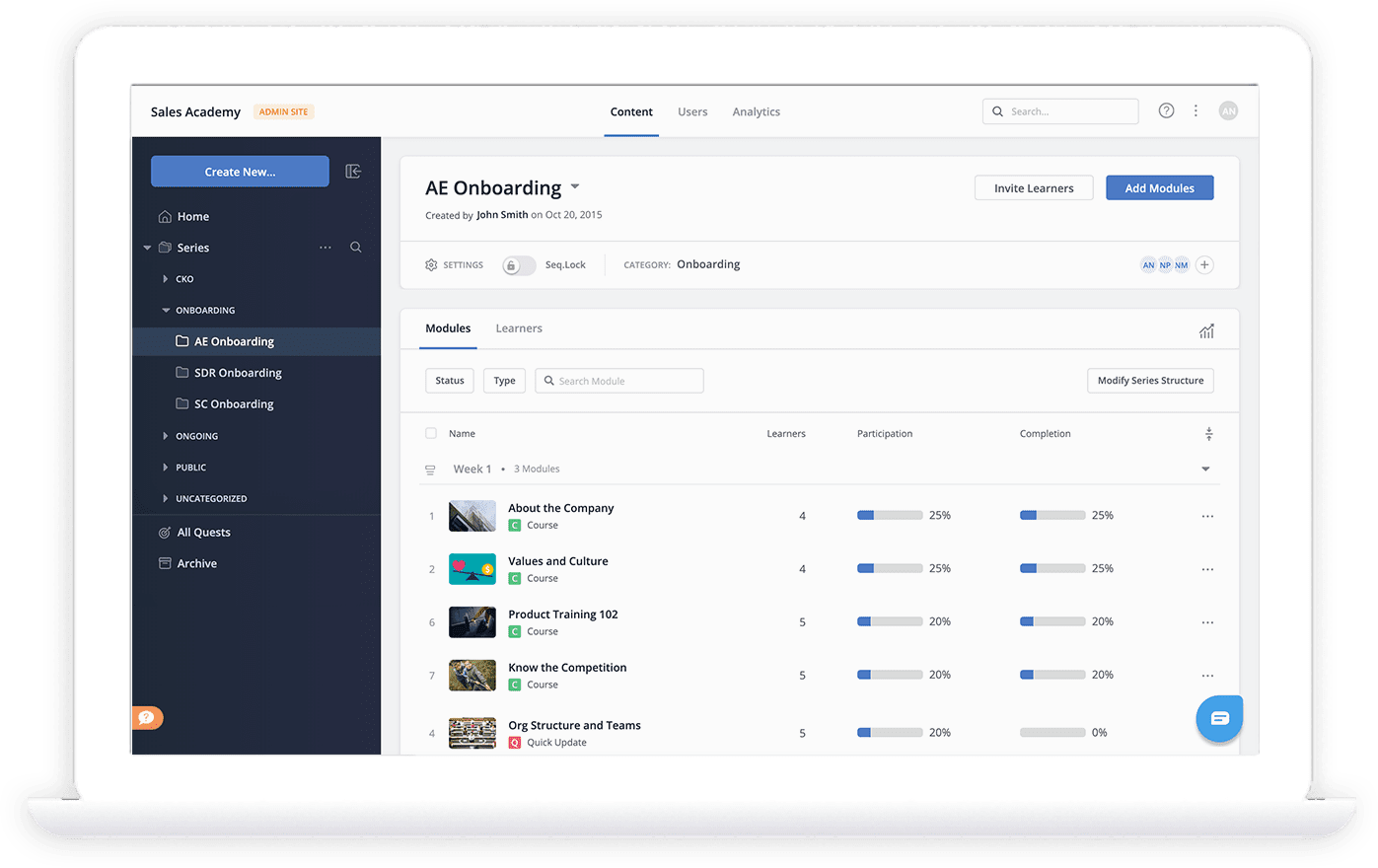Sales training must engage sellers and enable them to tackle any sales interaction. Unfortunately, the tried and true sales training formats of old now get stale quickly. Classroom-based lectures, group brainstorming sessions, and annual performance reviews lose their utility, bringing the team’s productivity and focus down with it.
But sales training doesn’t have to be a drag. It may surprise you, but with the right approach, it can even be, dare we say, fun? Gamification and interactive methods spice up training and inspire reps to not just passively participate, but actively engage in learning. And the concept of gamification doesn’t just deliver short-term results — it plays a significant role in a dynamic sales everboarding strategy, leading to better productivity and retention over time.
Below we define gamification and show you how it can be a lucrative technique for your training program.
What is gamification?
Gamification refers to the application of gaming elements into non-game situations or processes. Incorporating point-keeping, leaderboards, badges, competitions, team activities, and other game-like features boosts concentration and participation.
While fusing a game-like system into your sales training strategy may not feel natural at first, thinking strategically and investing the necessary time and effort can drive success across the organization.

Benefits of gamification in sales training
Gamification addresses common frustrations associated with conventional training methods, offering the following advantages:
- Enhances motivation. The spirit of competition is proven to trigger endorphins, motivating people to work even harder to reach goals and “beat” their fellow sellers.
- Boosts engagement. More motivated sellers mean they are more willing to participate and complete assigned training materials.
- Adds convenience. Available on mobile, training games and competitions can be done anywhere, any time — also contributing to higher engagement across the team.
- Is less time-consuming. While upfront it will take some time to create gamified training and set it in motion, sales reps can complete the training without taking hours away from active selling.
- Focuses on unique needs. Gamification can be personalized to individual teams and salespeople to strengthen the skills that need it most.
- Promotes continuous learning. Rather than watching a video or reviewing a product slide deck, you can consolidate as many materials as you want into your contest or game, and space them out to focus on different subjects and cement learning.
- Builds morale. Sales can be isolating, with reps taking an “every person for themselves” outlook. Creating competition surrounding training materials and events spurs teamwork and collaboration across the organization.
Implementing gamification into your sales training program
Does this all sound like it could boost seller productivity? Ready to try it out with your organization? Keep these best practices in mind to ensure gamified learning is a win for everyone on your team.
Start with desired outcomes and objectives
With any training, you likely have goals in mind for what you want to achieve. Developing a gamification program will require time and financial investment, and the only way to know whether it’s working is to set specific objectives toward which to work. Whether you are trying to educate sellers on a new product, increase reps’ content usage with buyers, or grow a certain skill set, put SMART goals (specific, measurable, attainable, relevant, and time-bound) into place and communicate them with your team.
Establish a timeline
Once your goals are set, work backward to create a realistic timetable. Consider how long it will take to craft your gamification strategy, roll it out to the team, and carry out the game itself. Whether you decide to hold a contest rewarding whoever completes the training first or assign points for different training-related challenges, determine a deadline and stick to it. If you introduce the game as a continuous activity with no end, there won’t be a sense of urgency and you’ll likely find many reps fail to participate.
Offer gamified learning digitally
It doesn’t make much sense to gamify training for added enjoyment then force sellers to complete it at their desk in the office. Lean into the game format and make training materials available via an app or mobile platform for sellers to play at their leisure, wherever they are. This added convenience will encourage continued cooperation amongst the team.


Track individual progress
Those objectives you set in the beginning? Critical to a gamified training initiative is to evaluate success throughout. Put reps — and your training program — to the test with regular assessments of both completion and performance. If completion rates or scores are low, you’ll need to make adjustments to your approach. To further motivate salespeople to continue participating in future training exercises, recognize rep achievements and reward them with appropriate prizes.
Reinforcement: essential to lucrative training
While gamification is more interactive and engaging, it’s important that while analyzing participation in the training itself you are also assuring that sellers are actually learning and retaining information over time. A single contest may show immediate positive results, but are reps absorbing the information 30, 60, and 90 days after it’s complete?
You want to make things fun, but at the end of the day, the goal of training remains the same: generating positive sales outcomes. The great thing about gamification is that it can be incorporated anywhere you choose within training. But it should be just one part of your broader sales everboarding strategy, driving ongoing learning that leads to better sales readiness, improved buyer engagement, and ultimately more closed deals.







